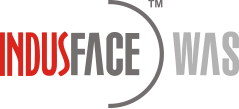What Is Penetration Testing Tools?
Penetration testing tools, commonly referred to as ethical hacking tools, are software programs that mimic cyber attacks on computer systems and networks. These technologies enable security experts to uncover vulnerabilities and flaws in their systems, thereby improving their overall security posture. The market offers a variety of penetration testing tools, each with its own set of features and capabilities.
Some programs are dedicated to network or web application testing, while others specialize in wireless network testing or database vulnerability assessment. Buyers must understand their individual objectives and goals before selecting the best tool for their firm. Penetration testing tools often use a methodical approach that includes reconnaissance, scanning, exploitation, and reporting.
During reconnaissance, the program collects information about the target system, including the operating system, applications, and services. The scanning stage entails locating open ports, network weaknesses, and prospective attack targets. The malware will next attempt to attack these vulnerabilities in order to get access to the machine. Finally, the tool creates a full report on the findings, indicating any important vulnerabilities that must be addressed immediately.
These technologies are critical for any firm that wants to keep ahead of cyber attacks and protect its sensitive data. They not only assist in identifying vulnerabilities, but they also provide significant insights regarding the effectiveness of an organization's security procedures. Regular penetration testing allows firms to proactively reinforce their security defenses, mitigate potential risks, and reduce the possibility of a successful cyber assault.
When choosing a penetration testing tool, customers should evaluate aspects such as ease of use, integration with other security solutions, results accuracy, and customer service. It is also critical to use a program that is constantly updated to stay up with growing cyber threats.
What Are The Recent Trends In Penetration Testing Tools?
Penetration testing, commonly called ethical hacking, is a critical component of cybersecurity. With the growing amount of cyber attacks and data breaches, businesses are putting more emphasis on discovering and correcting system vulnerabilities. This has resulted in an increase in demand for trustworthy and effective penetration testing technologies. In recent years, some exciting trends have evolved in the world of penetration testing software. These trends shape the market and influence business purchasing decisions.
Here are the most important trends in penetration testing tools to consider before making a purchase.
1. Automation: With the rising complexity of systems and networks, enterprises are finding manual penetration testing less practical. This has led to an increase in the use of automation in penetration testing tools. These technologies utilize artificial intelligence and machine learning techniques to detect and exploit system vulnerabilities automatically. Automation not only saves time and manual work, but it also lowers the possibility of human error. It enables enterprises to conduct more frequent and extensive penetration tests, hence improving the overall security posture.
2. Cloud Based: Solutions Enterprises are rapidly migrating their systems and apps to the cloud for cost savings and scalability. This has created a demand for penetration testing solutions that can integrate smoothly with cloud infrastructure. The availability of cloud-based penetration testing tools, which can mimic attacks on cloud systems and assess their security, has increased significantly. These solutions provide flexibility and ease, making them popular among enterprises of all sizes.
3. Integration With DevOps: DevOps has transformed the software development process, providing agility and efficiency to enterprises. However, when modifications are delivered to production on a regular basis, it introduces new security risks. To solve this, penetration testing technologies are being integrated into DevOps processes. This enables continuous testing of programs during development and deployment, ensuring that security is not compromised.
4. Focus On Reporting And Analytics: Penetration testing is only useful if the results are reported correctly and reviewed for meaningful insights. In recent years, there has been a strong emphasis on reporting and analytics features in penetration testing software. Most reporting technologies now include advanced capabilities including graphical representations, risk scoring, and trend analysis. This allows enterprises to better evaluate their security posture and prioritize remedial actions.
5. Shift To Mobile And IoT Security: As firms employ more mobile devices and IoT (Internet of Things) devices, the risk of cyber assaults increases. This has resulted in a shift in the focus of penetration testing tools to mobile and IoT security. Penetration testing solutions increasingly provide particular features and testing capabilities for mobile and IoT devices, assuring their security within the larger network architecture.
Benefits Of Using Penetration Testing Tools
Penetration testing tools are an essential component of any organization's cybersecurity armory. These technologies imitate real-world attacks on a system or network, allowing cybersecurity specialists to find vulnerabilities and flaws that criminal actors may exploit.
Here are some of the major advantages of employing penetration testing tools.
1. Identify Weaknesses: Using penetration testing tools allows you to identify weaknesses in your organization's system or network. These technologies can identify areas where security measures are missing, allowing firms to address them before an actual attack happens.
2. Test Security Procedures: Penetration testing technologies enable firms to test their current security procedures and protocols. By simulating various attack scenarios, these technologies may assess the efficiency of current security measures and assist organizations in improving their overall security posture.
3. Cost-Effective: Compared to the financial and reputational harm caused by a successful cyber assault, investing in penetration testing tools is quite inexpensive. These solutions can save firms a lot of money by preventing potential cyber assaults and lowering the risk of data breaches.
4. Compliance With Regulations: Most sectors are subject to a variety of regulations and standards. Using penetration testing tools can assist firms in satisfying these criteria and avoiding potential penalties for noncompliance.
5. Minimize Downtime: Any security breach or attack can cause substantial downtime and disruption to corporate processes. Using penetration testing tools, organizations can identify and repair vulnerabilities before they are exploited, reducing the risk of downtime and maintaining business continuity.
6. Prioritize Security Investments: Penetration testing techniques provide useful information about an organization's security posture. These reports can help firms prioritize their security spending by identifying crucial areas that need immediate attention.
7. Maintain Customer Confidence: In today's digital age, customers are becoming increasingly concerned about the security of their personal information. By doing penetration testing on a regular basis, firms can demonstrate their commitment to protecting consumer data and preserving client trust.
Important Factors To Consider While Purchasing Penetration Testing Tools?
Penetration testing, often known as ethical hacking, is an important part of assuring the security of a company's or organization's networks and systems. With ever-increasing cyber dangers, having the correct tools is critical for conducting successful and thorough penetration testing. However, with so many options available on the market, selecting the correct penetration testing tools can be difficult.
To make an informed decision, here are some crucial considerations to consider when selecting penetration testing tools:
1. Type Of Testing: Before purchasing a penetration testing tool, it is critical to know what type of testing it will be used for. Some tools focus on network testing, while others are intended for web application testing. It is critical to understand your organization's requirements and select a solution that can efficiently do the necessary type of testing.
2. Features And Capabilities: To guarantee that a penetration testing tool fulfills your needs, you should thoroughly evaluate its features and capabilities. Look for features like automated scanning, vulnerability assessments, and reporting options. Always choose tools that provide a variety of functions for conducting a thorough examination.
3. Customizability And Scalability: When it comes to penetration testing, each organization has unique demands and expectations. Look for solutions with customization choices that can be adjusted to your organization's specific requirements. Consider the tool's scalability to ensure it can support future system growth and changes.
4. User-Friendliness: Penetration testing tools should be easy to use, particularly by non-technical users. Look for tools with simple interfaces and reporting that can be understood by team members with diverse technical expertise.
5. Compatibility: When purchasing a penetration testing tool, ensure that it is compatible with your organization's systems and network. Make that the tool is compatible with your operating system, network configuration, and other security solutions.
6. Technical Help And Maintenance: Penetration testing tools, like any other software, require technical help to resolve any issues that may develop. Look for products that provide dependable technical support and regular upgrades to keep the tool functional and up to date with the newest security standards.
7. Cost: The price of a penetration testing tool is unquestionably an important issue to consider. While it may be tempting to choose a less expensive choice, sacrificing tool quality and efficacy to save money may end up costing more in the long term. Before purchase, consider the tool's worth in terms of features, support, and compatibility.
What Are The Key Features To Look For In Penetration Testing Tools?
When choosing a penetration testing tool, you must carefully analyze its important characteristics.
These features determine the tool's performance, dependability, and compatibility with your specific requirements and surroundings.
1. Wide Range Of Testing Techniques: A reliable penetration testing tool should have a wide range of testing techniques for identifying vulnerabilities in your network and systems. These could include network scanning, password cracking, vulnerability scanning, social engineering, and more. The more ways a tool includes, the better the possibilities of detecting potential threats.
2. Cross-Platform Compatibility: In today's linked and diverse IT world, it is critical to choose a penetration testing solution that supports different operating systems and platforms. This ensures that the tool can perform its functions successfully and without compatibility difficulties, regardless of the systems you are attempting to secure.
3. User-Friendly Interface: A user-friendly interface is critical for making the product work efficiently and to its full capacity. Look for a tool with a simple and intuitive interface, so that non-technical individuals can navigate and benefit from it.
4. Customization Options: Every firm has distinct security requirements and systems to protect. Choose a tool that allows you to customize the testing procedure to meet your individual needs. This feature enables more accurate and extensive testing, resulting in improved security measures.
5. Real-time Reporting And Analysis: A thorough penetration testing program should not only run tests, but also generate extensive reports and analysis in real time. This allows security teams to swiftly detect and address vulnerabilities before they are exploited by actual attackers.
6. Continuous Updates And Support: In the ever-changing world of cybersecurity, it is critical to have a tool that is constantly updated with the most recent security updates and testing methodologies. It is also beneficial to have dependable customer service to handle any concerns or questions that may emerge during the testing procedure.
7. Integration With Other Security Tools: Choose a penetration testing tool that can be integrated with your existing security solutions to create a more efficient and complete security strategy. This connection offers a comprehensive perspective of security concerns, enabling more effective risk management.
Why Do Businesses Need Penetration Testing Tools?
As businesses become more reliant on technology, the risk of cyber assaults and data breaches increases. To preserve sensitive information and maintain client and customer trust, firms must do frequent penetration testing. This entails replicating real-world attacks on a system in order to find vulnerabilities and flaws that hackers could exploit.
Penetration testing tools are vital for this process because they give firms with the resources and support they need to conduct thorough and successful security evaluations. These technologies are intended to imitate the strategies and tactics employed by hackers, allowing firms to test their systems in a controlled environment and detect potential vulnerabilities.
One of the primary advantages of adopting penetration testing tools is that they help firms gain a thorough understanding of their security posture. This includes detecting weak points in the network, applications, and systems, as well as evaluating the efficacy of existing security controls. Businesses that recognize and remedy these flaws can dramatically minimize the danger of a cyber attack while also protecting their valued assets.
Furthermore, penetration testing tools enable the testing of many attack scenarios, including phishing attempts, social engineering, and malware. This gives organizations a better awareness of prospective threats and their effects, allowing them to prioritize and deploy resources more effectively. Furthermore, implementing penetration testing tools can help firms satisfy regulatory and industry standards.
With the rise of data protection requirements like as GDPR and CCPA, frequent security audits are required to maintain compliance and avoid costly fines. Investing in penetration testing technologies provides firms with a proactive and cost-effective solution to discover and eliminate potential hazards before they are exploited by criminal actors.
With so many options available on the market, organizations must carefully analyze their individual requirements before selecting a tool that corresponds with their aims and objectives. Businesses that incorporate penetration testing technologies into their cybersecurity strategy can not only defend themselves, but also inspire trust and confidence in their customers.
How Much Time Is Required To Implement Penetration Testing Tools?
Penetration testing is a critical step in detecting vulnerabilities in a company's network and systems. With an increasing number of cyber threats, businesses must invest in trustworthy penetration testing solutions to secure data protection. However, one common question among buyers is how much time is required to implement these technologies. This question cannot be answered definitively because it is heavily influenced by the network's complexity and the tools utilized. Implementing penetration testing tools often takes a few days to a few weeks, depending on a variety of circumstances.
Let's look more closely at these factors to gain a better understanding of the implementation process.
1. Network Size And Complexity: The size and complexity of your network have a major impact on the amount of time necessary to apply penetration testing tools. If your network is huge and sophisticated, scanning, identifying, and fixing vulnerabilities will naturally take longer. On the other side, a smaller network may be inspected and evaluated more quickly.
2. The Tools Being Used: There are several types of penetration testing tools on the market, each with its unique set of features and capabilities. The time necessary to apply these tools varies according on the type of tool you select. For example, if you choose automated tools, they can greatly minimize the time required for implementation when compared to manual methods.
3. The Testing: team's expertise and experience are also important in the implementation process. If the team has extensive expertise and experience with the chosen penetration testing tools, the implementation process may be accelerated and more efficient.
4. Testing Preparation: Prior to adopting penetration testing tools, the network must be prepared for testing. This entails obtaining approvals, securing essential permissions, and identifying critical assets that must be safeguarded. This preparation may take some time, depending on the organization's internal processes.
5. Time: required for testing and correcting vulnerabilities: Once the implementation is complete, the actual testing begins. The time required for this process varies according to the number of vulnerabilities detected and their severity. Additionally, the time necessary to remedy these vulnerabilities might have an influence on the whole implementation process.
Which Industries Can Benefit The Most From Penetration Testing Tools?
Penetration testing tools are becoming an integral component of every organization's cybersecurity armory. These powerful technologies simulate cyber attacks and reveal flaws in a company's network, systems, and applications. While penetration testing can assist every company, some industries will profit the most from using these technologies.
Let's explore, which industries can benefit the most from penetration testing tools, as well as how to effectively combat cyber risks.
1. Banking and Financial Services: Because banks and financial institutions handle sensitive client data and transactions, they are popular targets for hackers. A data breach in this industry can cause significant financial and reputational damage. These firms use penetration testing technologies to uncover system flaws and secure their data from cyber threats.
2. Healthcare: As technology advances, the usage of electronic health data and connected medical devices has grown. This has left the industry vulnerable to cyber attacks, making penetration testing critical for identifying and mitigating possible threats. Furthermore, healthcare firms must follow tight rules like as HIPAA, and penetration testing aids in compliance.
3. E-commerce: Because e-commerce enterprises handle a significant number of sensitive client information, including payment information, they are a prime target for cybercriminals. Penetration testing tools assist these firms in identifying weaknesses in their websites and e-commerce platforms, as well as strengthening security procedures to prevent cyber assaults and data breaches.
4. Government Agencies: Government agencies are a prime target for cyber assaults because they store sensitive information such as citizen records and national security data. Penetration testing technologies assist these firms in identifying and addressing potential vulnerabilities in their systems, networks, and infrastructure, protecting them from cyber threats.
5. Technology Companies: As technology evolves, so do cyber risks. Technology organizations are continually creating and deploying new software and applications, which leaves possibility for possible flaws. These firms can use penetration testing technologies to find and patch vulnerabilities before they are abused by cybercriminals.
Conclusion
To summarize, selecting the appropriate penetration testing tools is critical for any firm attempting to examine the security of its systems. Making an informed decision requires understanding the many types of tools available and their respective functionalities. When choosing penetration testing tools, consider the type and scope of testing, the budget, and the team's skillset.
To stay ahead of potential dangers, use technologies that provide extensive reporting, in-depth analysis, and ongoing updates. It is always best to choose popular and well-established vendors because they provide high-quality, dependable tools backed up by good customer service. Conducting careful research, reading reviews, and getting opinions from industry professionals can also help you make the proper decision.
Overall, investing in high-quality penetration testing tools can help organizations gain a better understanding of their security posture and detect and address vulnerabilities before they are exploited by bad actors. Organizations may improve their overall security and secure their precious assets by using the correct tools and strategies.




















